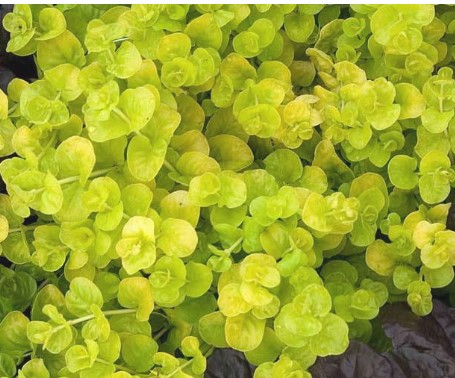
Yellow Creeping Jenny, also known by its botanical name Lysimachia nummularia ‘Aurea’, is a popular and attractive low-growing perennial plant that belongs to the Primulaceae family. It is native to Europe and parts of western Asia. The plant is often used as a ground cover due to its spreading and trailing growth habit.
Key characteristics of Yellow Creeping Jenny:
- Foliage: The most striking feature of this plant is its vibrant golden-yellow or chartreuse foliage. The leaves are small, round, and coin-shaped, which gives rise to the common name “Creeping Jenny.”
- Growth habit: Yellow Creeping Jenny is a fast-spreading plant that forms a dense mat of foliage. It has a creeping, trailing, or vining growth habit, making it an excellent choice for ground cover, rock gardens, and hanging baskets.
- Flowers: In late spring to early summer, Yellow Creeping Jenny produces small, bright yellow, cup-shaped flowers. While the flowers are not as prominent as the foliage, they add a touch of color to the overall appearance of the plant.
- Sunlight and water requirements: This plant prefers partial to full sun conditions. It thrives in moist to wet soil and can tolerate growing near water features, making it suitable for boggy or marshy areas.
- Hardy and easy to care for: Yellow Creeping Jenny is generally hardy and easy to grow. Once established, it can be quite low-maintenance, although it may require some pruning to prevent overgrowth and keep it in check.
- Invasive potential: It’s important to note that Yellow Creeping Jenny can be aggressive and has the potential to become invasive in certain areas, especially if not properly managed.
Overall, Yellow Creeping Jenny is a beautiful and versatile plant that can add a burst of color and lushness to various garden settings. However, it’s essential to consider its growth habits and manage it accordingly to prevent it from taking over other plants or areas in the garden. Always check with local authorities or gardening experts to ensure that this plant is suitable for your specific location and won’t cause ecological harm.
